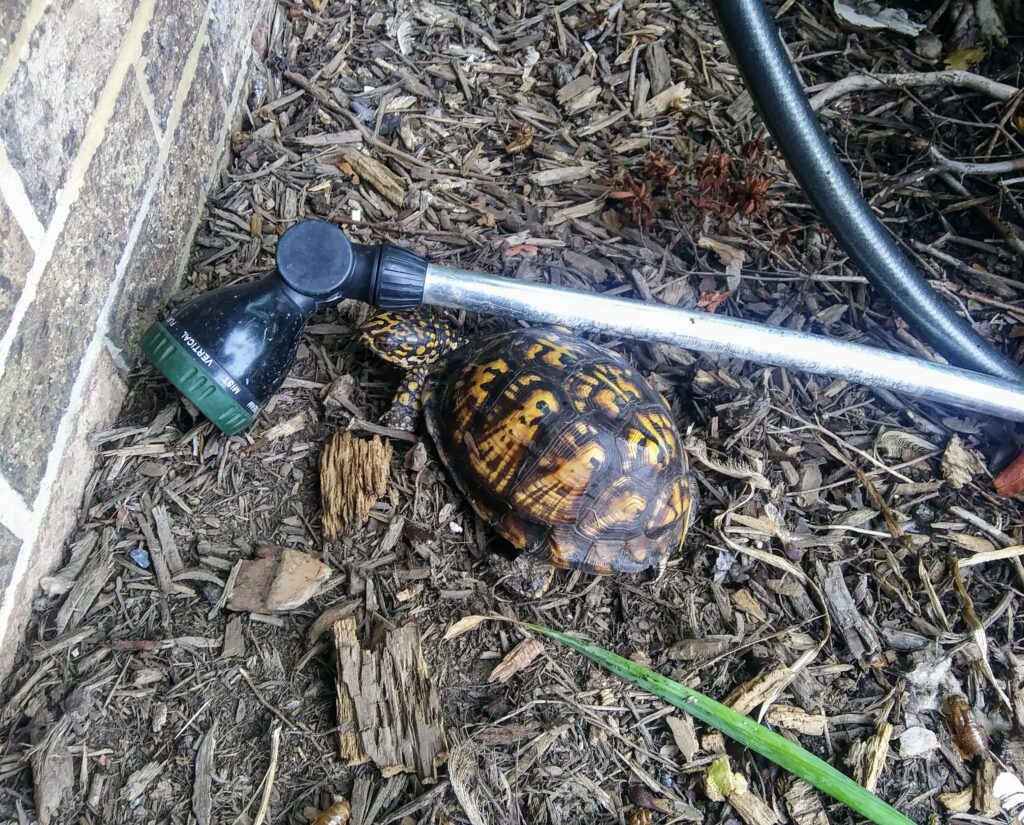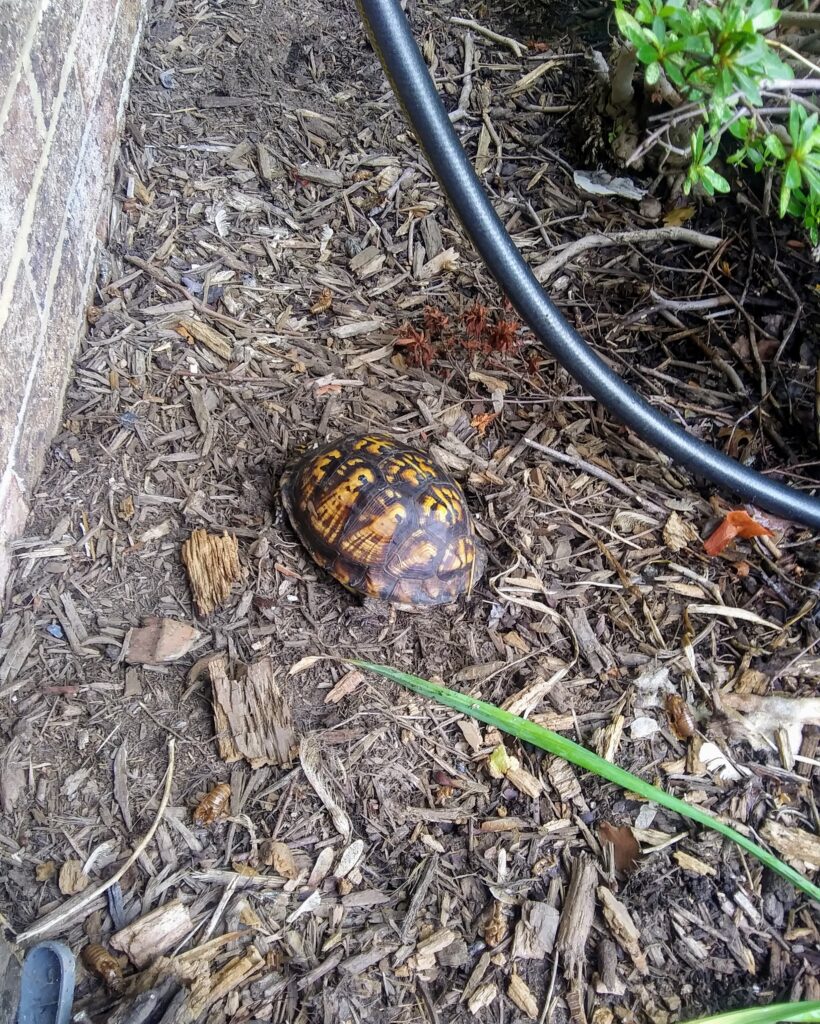I found this turtle right outside my front door.
I went online to the Virginia Herpetological Society pages in order to identify the turtle. I didn’t want to pick the turtle up. From my research, I believe this turtle is an adult Virginia Woodland Box Turtle.
The carapace or shell can range in size from 4.5 to 6 inches in length. Virginia Woodland Box Turtles are brown colored with orange or yellow patterns on their shells. This turtle’s pattern almost looks like an open fan. Virginia Woodland Box Turtles are known to live for many years.
Woodland Box Turtles can be found in wooded areas, forests, or swamps. I guess they can even be found in urban areas like my yard.
They survive the winter by covering themselves with several centimeters of grasses or leaves.
The Woodland Box Turtles are omnivores. They eat low lying blueberries, wild strawberries, grapes, slugs, snails, grasshoppers, flies, beetles, salamanders, etc. There are a lot of slugs and some blueberries in my yard this turtle might be after.

In ancient archeological sites, Native Americans used the shells for food containers and rattles.
Sadly, many Woodland Box Turtles are killed by cars when crossing roads. Turtles are most likely to be on the road in the early mornings after a rain. Thousands are also collected to be used for pets. However, even one missing adult turtle can disrupt the turtle population in an area.

The VA Woodland Box Turtle can completely pull its self into a shell and close the openings when it feels threatened.
This is a photograph of the turtle after I moved the watering wand.
If you come across a Woodland Box Turtle, please leave it alone so it can live its life in the wild.

